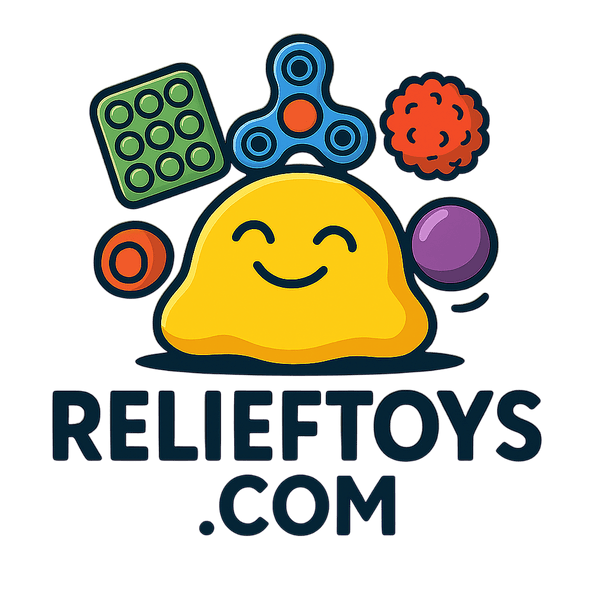Sensory Toys Explained: How They Help With Stress and Focus
Share
(A Real Talk Breakdown by Someone Who’s Been There)
I’ll be honest—when I first heard about sensory toys, I thought they were just fidget spinners in disguise. Something kids used to keep busy during math class. But I was wrong. Way wrong. These little tools—soft, stretchy, clicky, squishy, textured—have a real purpose. And once you understand what they do for your body and brain, it’s hard not to see how powerful they actually are.
If you’ve ever had that restless energy in your chest, or your mind just won’t stop bouncing around, you know what I’m talking about. Stress doesn’t always look like screaming or crying—it can be the quiet, twitchy kind that eats at your focus. That’s where sensory toys come in.
What Are Sensory Toys, Really?
At their core, sensory toys are objects designed to stimulate your senses—touch, sight, sound, even proprioception (that’s your body’s awareness of where it is in space). They’re made to engage your nervous system in a grounding way.
Think of them like small anchors for your brain. When your thoughts start to spiral or scatter, sensory input helps pull you back into the present moment. It’s not magic—it’s just how the nervous system works.
That’s why they’ve become a staple not just for kids, but for adults who deal with anxiety, ADHD, sensory processing issues, or just... modern life. (Because let’s be real—this world doesn’t exactly run on calm.)
If you’re curious to see the different types, you can browse the full collection of stress and fidget toys here. There’s a surprising range, from classic stress balls to toys that look like art pieces.
The Science Behind the Calm
When you touch or manipulate a sensory toy, your brain gets immediate feedback. That tactile stimulation releases tension and activates parts of your brain responsible for regulation and focus.
It’s similar to the way some people doodle in meetings or tap their foot while thinking—it’s the body’s way of self-regulating. Sensory toys just make that process more intentional (and less annoying to everyone around you).
There’s actual research backing this up. Engaging your hands during moments of stress can lower cortisol levels and increase dopamine—the neurotransmitter tied to motivation and focus. If you want to dig deeper into how this all works, Relief Toys has a great post on how fidget toys help reduce anxiety and improve focus.
Who Benefits From Sensory Toys
You don’t need a diagnosis to use one. Sensory toys are for anyone who feels overstimulated, distracted, or tightly wound.
- Kids use them to manage energy and emotions (check out the stress toys for kids collection). They learn how to self-soothe, which honestly, a lot of adults still struggle with.
- Adults use them to unwind during work, study, or even social settings. That low-level hum of stress most people live with? These toys give your nervous system a break.
- People with ADHD or anxiety often find them especially grounding. When your mind is in a hundred places, your hands can bring you back to one.
If you’re not sure what’s right for you, start with something simple from the stress relief toys collection—a squishy ball, a textured ring, or a small cube you can click and roll around without drawing too much attention.
My First Experience with Sensory Toys
I used to be skeptical. I thought sensory toys were another “relaxation trend” people talked about online but didn’t really use. Then one day, I was gifted a simple silicone stress ball after a rough week.
I didn’t even plan to use it seriously—it was just sitting on my desk. But then, during one of those days where every notification felt like a punch, I grabbed it. I squeezed it. And for the first time that day, I wasn’t lost in thought—I was right there, feeling that soft give in my hand.
That little thing became part of my routine. Meetings, writing sessions, even while watching TV. It’s weirdly grounding.
And it’s not just me—people swear by these tools. If you want to see which ones actually make a difference, Relief Toys has a roundup of the top 10 stress relief toys that actually work.
Why This Matters Now More Than Ever
We live in an age of constant pings, ads, and scrolls. Our attention spans are fried. Our nervous systems? Overloaded. Everyone’s just trying to stay afloat in this constant buzz of stimulation.
Sensory toys aren’t a cure for that—but they’re a small act of resistance. A way to say, “I’m slowing down. I’m grounding myself.”
You can find all kinds of stress relief and sensory toys here if you want to start experimenting.
Final Thoughts
Sensory toys aren’t just for kids, or classrooms, or therapists’ offices. They’re for anyone who’s tired of feeling scattered, tense, or disconnected. They remind you—physically—that you’re here. Right now.
So next time your mind’s racing or your hands won’t stay still, don’t overthink it. Grab something that feels good to touch. Twist it, squeeze it, stretch it. Feel it fight back just a little.
That’s your body finding balance again.
And in a world like this, that’s no small thing.
👉 Explore more at ReliefToys.com —a place built by people who get it. People who’ve been through the stress, the restlessness, and the search for calm. You might find something that just clicks.
